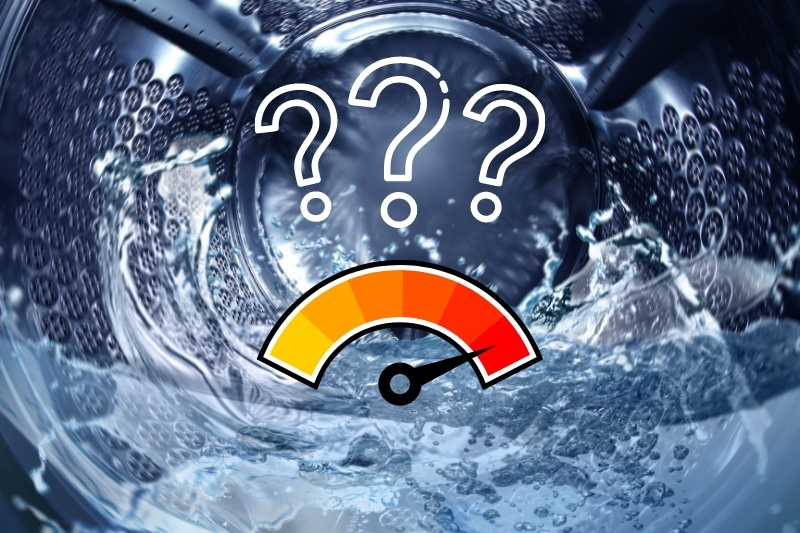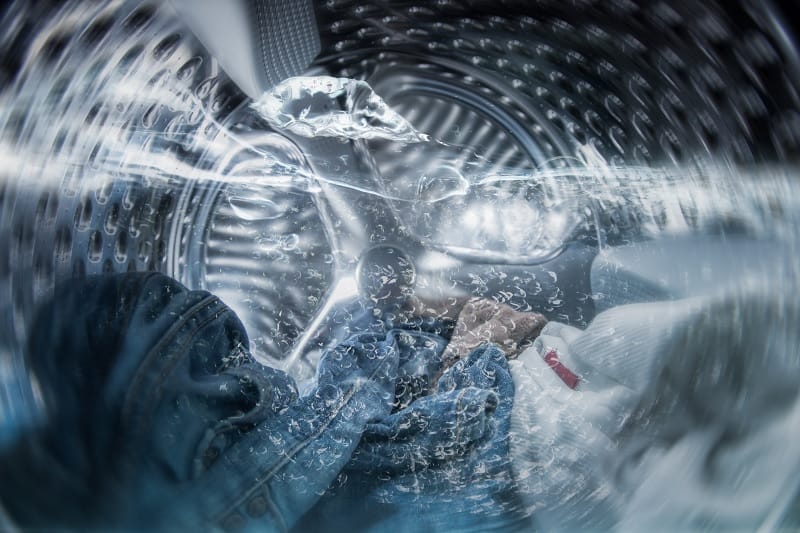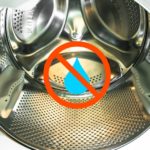Maybe your clothes come out of the washing machine cold, stained or smelling musty.
You put your hand on the washing machine during the next wash and don’t feel any heat. Does this mean it isn’t heating the water? Should a washing machine feel warm on a hot wash?
There are a few indications that a washing machine may not be heating up correctly. However, it’s not as simple as checking whether the machine gets warm.
It’s not an easy diagnosis, but this article offers tips for checking whether your washing machine is heating water.
How Does a Washing Machine Heat Water?
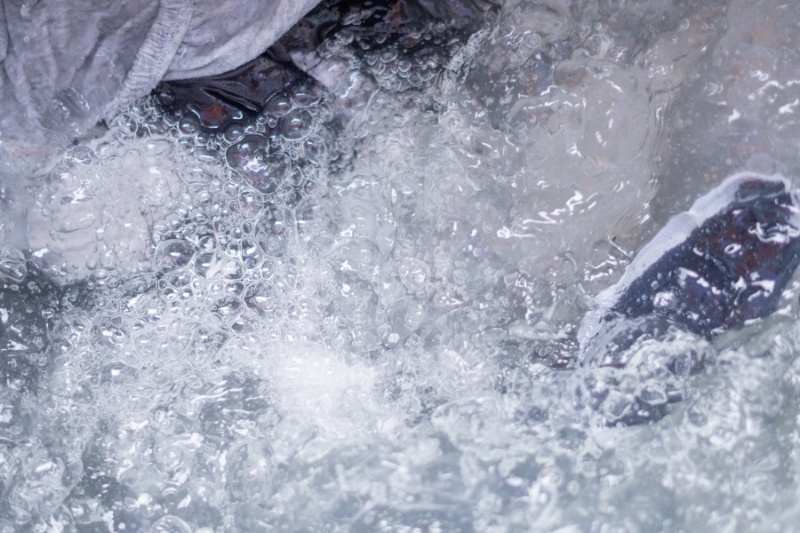
Some washing machines heat their own water while others draw it from the hot water source. You’ll be able to tell the difference if you have one or two pipes supplying your washing machine.
One pipe indicates that the machine will be supplied with cold water and will heat the water itself. This is more common in Europe.
In North America, it’s also common to see machines with two pipes, one for hot and one for cold water. Even these machines may need to further heat water if you choose to wash on a very hot cycle.
Machines with two pipes are becoming less common as it’s usually more energy efficient for the machine to heat the water itself.
How to Check the Temperature of Washing Machine Water
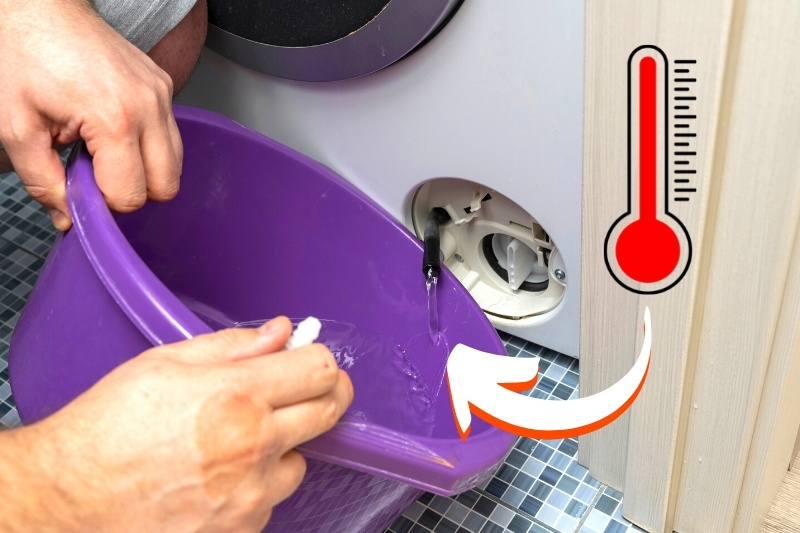
Checking whether the water is heating will depend on what kind of machine you have. Luckily, newer models will detect any malfunctions, display an error message and even stop the cycle.
Older models don’t have this capability so there are a few different ways to check:
- If the wash cycle continues indefinitely, this may be an indication that the heating element is faulty.
- Put a load on at a high temperature (60 degrees Celsius or above), and check the glass door or top of the machine around 30 minutes into the wash cycle to see if you can feel any heat. If you have a top-loading washer, you can check the lid instead of the door.
Unfortunately, this method isn’t fail-safe because the glass and plastic casing on machines are thick, so you may not feel the heat even if it’s working correctly.
Plus, the water is only hot for a short period so you may end up missing it depending on your machine’s cycle.
- Check whether clothing is coming out clean or stained and smelly. Again, this method is not necessarily an indicator that a faulty heater is to blame. Clothes coming out musty or not washed may be due to other issues.
- If possible, reroute the draining pipe into a bath or a large bucket and then test the water temperature with a thermometer when it drains.
None of the methods listed above can confirm a faulty heating element on their own. However, some combination of them may give you an idea.
As a rule of thumb, if your washing comes out clean, there’s likely nothing to worry about. When in doubt, always call a professional to check.
Why Am I Not Getting Hot Water in my Washing Machine?
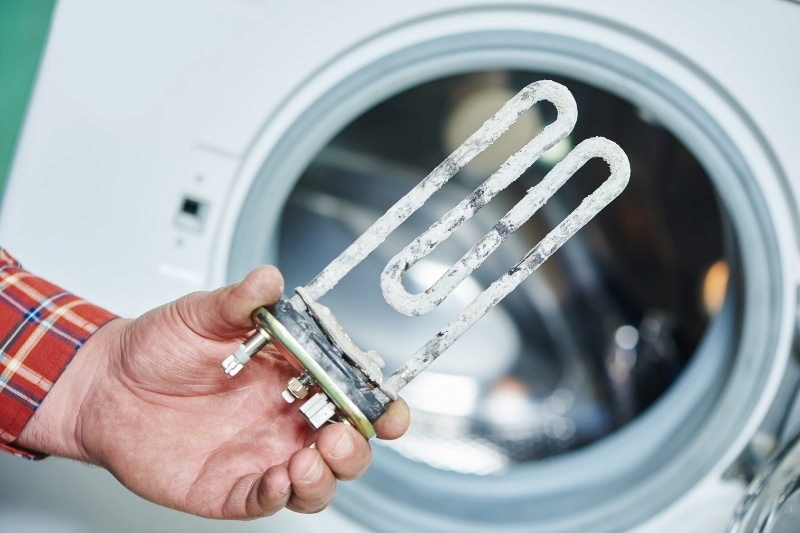
If you’re convinced that your machine is not heating up, it could be caused by a few issues:
- The heating element has a limescale buildup and can’t function correctly.
- The thermostat is damaged. The thermostat detects when the water heats up to your chosen temperature but if it’s faulty, the water might not heat correctly.
- A problem in the machine’s wiring. There could be faulty wiring stopping the power supply to the heating element meaning it can’t maintain power.
In any case, it’s always best to contact a professional as trying to fix your machine could void the warranty, or worse, cause you harm.

In The Wash is your guide to the best laundry and cleaning products, tips and tricks. Our mission is to solve the UK’s cleaning and laundry dilemmas!
